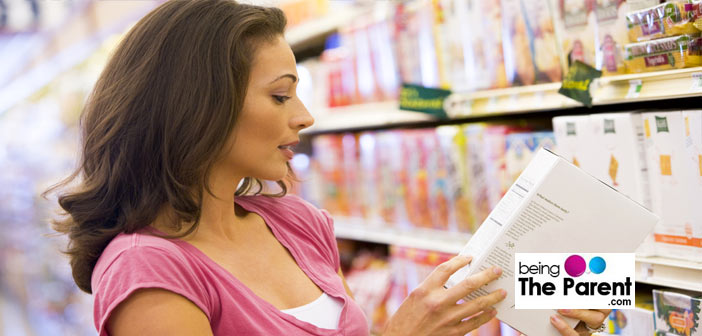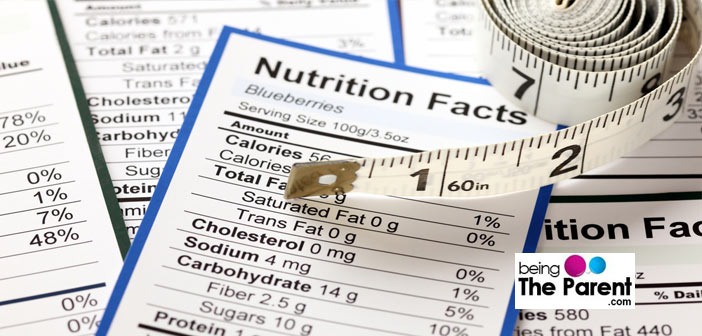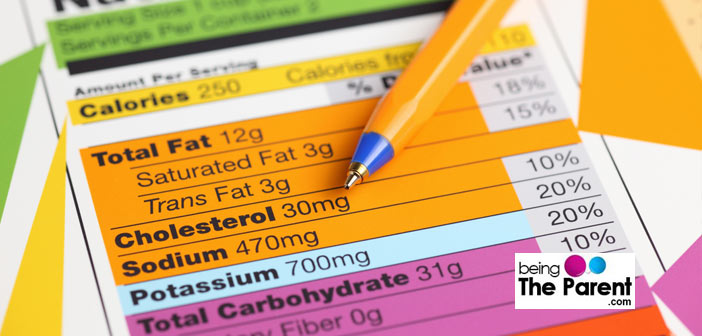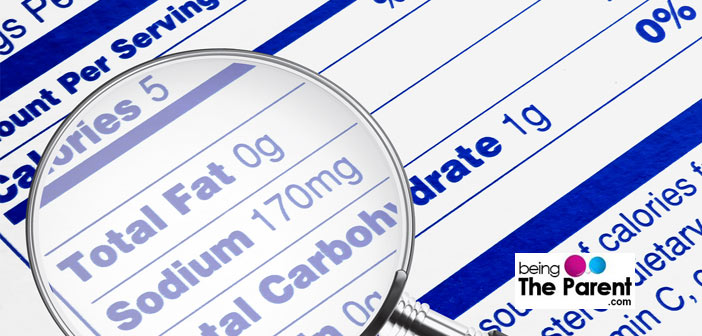
With the rising trend of health consciousness, “low carb” diet and fat free food, where do you locate yourself? Do you buy stuff from supermarket as you wish or are swayed by ads?, “Biscuit ke naam pe… kya kha rahe ho..? Sirf maida kha rahe ho.!” Does your mind silently play this song when you face the dilemma of choosing between Bourbon and Marie biscuits and finally pick up the pricey digestive biscuits? Truth is, the so hyped digestive biscuit can also contain Maida (white flour) with wheat flour.
- Why Should You Read The Food Labels?
- Reading Food Labels: Nutrition Facts Explained
- Reading Food Labels For Cholesterol and Sodium
- Reading Food Labels For Carbohydrates and Sugar
- Reading Food Labels: Nutrition Facts Explained
- Reading Food Labels For Diabetics
- RDA (Recommended Dietary allowance
Why Should You Read The Food Labels?
For yourself, for your family, you always want to pick up the best. When your child insists on having a particular snack, you want to ensure that it is healthy for him. While all major food ads will have children featuring in them, the idea is not that they are healthy for the kids, but the idea is that ad-makers know how to push the product from the TV screen to your kitchen shelf. So how not to be fooled by ads and make wise healthy choices? You simply need to pick the product, turn it around and read the food label. Food labels are usually ignored, but then Food Safety and Standards Authority of India put that up mandatory for a reason isn’t it?
Effective parenting begins with you, and when your kids will see their parents reading the labels, there are very good chances that you will be raising health conscious, more responsible children.
Reading Food Labels: Nutrition Facts Explained
A research published in the British Food Journal on use of food labels by Indian consumers concluded that, “difficult terminology, small font size and inability to understand nutritional labels are the major problems encountered by the consumers”
Read below to know how to read the labels effectively and understand jargons:
1. Serving size:
The food label begins with the mention of serving size. Serving size denotes the quantity of one normal portion consumed by a person. The total weight of the pack should not be considered as the normal serving size.
For instance, the total weight of a chips packet is 75 gm and the serving size is 15 gm, then it denotes only a handful of chips as one serving. If you consume more than this, then you are eating more calories. Probably double the calories specified for one serving, if you finish half the pack then five times more with the entire pack
2. Number of servings:
This figure indicates how many servings the entire pack can cater to. For instance, if the serving size of a cereal pack is 150 gm, then a 300 gm pack can serve two servings

3. Calories per serving:
The nutrients are mostly specified on the ideal adult intake of calories, i.e. approx. 2000 calories. Calories per serving indicate the amount of calories you will obtain from one serving. For instance 100 calories from one serving of 150 gm, then 200 calories from the entire pack of 300 gm
Calories from fat:
This specifies how many calories from the product intake come from the fat. For instance, Calories from fat (one serving of 150 gm) = 20, then consuming the entire pack (300 gm) will denote intake of 40 calories from fat.
As a general rule
- 40 Calories is low
- 100 Calories is moderate
- 400 Calories or more is high
4. Reading Food Labels For Fats
Coming to the fats, these come in various forms and names:
Total fats:
This figure denotes the total amount of fats present in the product. It may be specified for the total net weight of the pack or per serving
Saturated fats:
They increase the level of cholesterol in blood. Products containing palm oil, coconut oil contain high amounts of saturated fats. Various dairy products, butter, cheese, meat, chicken etc. are sources of saturated fats
Trans fats:
Also known as partially hydrogenated oil or hydrogenated oil. In plain words, this functions as a cheap alternative to butter. A very common form of fat that increases bad cholesterol. These are mostly added to increase the durability of the product.
Often found in breads, snacks such as chips and biscuits, even in baked food and dairy products. Note: Trans fat is more unhealthy than saturated fats since it decreases the amount of good cholesterol (HDL: High density Lipoprotein) and increases bad cholesterol (LDL: Low density lipoprotein)

Unsaturated fats:
These fats are good for the body as they lower cholesterol and reduce the risk of developing coronary heart diseases. Look for products which are low in saturated fats and trans fat
Polyunsaturated fatty acids:
They are required for the body for proper functioning such as tissue building, blood clotting and fighting inflammation. If you spot Omega-3 and Omega-6, this indicates polyunsaturated fatty acids. Other sources include un-hydrogenated soybean oil, canola oil, flax seeds and walnuts
Monounsaturated fatty acids:
Another type of fat which is good for the body, but only in the sense that these should be preferred over saturated fats and trans fat. Most nuts contain these. You may want to consider products made in olive oil or groundnut oil as a source of monounsaturated fats
5. Reading Food Labels For Cholesterol and Sodium
- Cholesterol: It clogs arteries and increases the risk of heart attack. Many products are now available with 0 mg cholesterol. However, keep an eye on trans fat and sugar
- Sodium: Depending on the age, the amount of salt intake should be reduced. Too much salt increases the risk of developing high blood pressure, kidney disease and bloating. Brine or salt solution, soya sauce and packaged/tin food contain very high content of sodium. Refer to the RDA before buying the product
6. Reading Food Labels For Carbohydrates and Sugar
- Carbohydrates: Carbohydrates are an instant source of energy for the body. They can instantly spike the level of blood sugar. So if you have any medical condition such as diabetes or sedentary lifestyle, you may want to take these in prescribed amounts only
- Sugar: Sugar also provides energy to the body, remember glucose drink? The American Heart Association has recommended a daily limit of sugar to be no more than 6 teaspoons (approx. 18 gm), i.e. approx. 100 calories. Note that this figure doesn’t corresponds to the calorie intake from actual sugar itself but sugar is present in almost all foods you eat, such as bread and potatoes too
7. Reading Food Labels: Nutrition Facts Explained
So you are happy as a punch when you read a label that says ‘all natural’ or ‘whole grains’ or low fat. Do you think it is what it says. The answer is in the below lines:
- Whole Grains: So you do pick up food stuffs that says ‘whole grains’, don’t you? But do you know that manufacturers can put ‘whole grains’ on the label even if there is a negligible amount of whole grains in the food item. You need to read the label carefully and ensure that you do take something that has a considerable component of whole grains in it, and not go by the label or the advertising jingle
- Natural Flavors: So anything that has been labelled ‘containing natural flavors’ gets the first preference in your shopping trolley. But do you know that both artificial flavors and natural flavors do contain chemicals – the difference being that natural flavors are derived from plants or animals sources, whereas artificial flavors are derived from inedible items. So much so to go all natural!
- Low Fat: Low fat does not necessarily mean low calories. In fact, in order to make up for the flavors derived from fat, food companies add other components which may not be fatty, but would add up the calorie count
8. Reading Food Labels For Diabetics:
- Sugar free is not carb free: Thanks to the ad world, sugar is apparently the best to be avoided. But buying all sugar free is not necessarily going to make you get away with carbohydrates. Choose a sugar free product if the carbohydrates are considerably low, else there is no harm in consuming the normal variant with equivalent carbohydrates. Let your taste and the product price make the call
- High Fibre Food: Yes, everything that might cream ‘contains fibre’ may not be the ideal choice. You need to pick up foodstuffs that have at least 3 or more grams of fibre
- Check out carbs, not just sugar: Ensure that you are taking in sugar free food that has a whole lot of carbohydrates. Certain foods would be labelled zero on sugar, but can have complex carbs which is not ideal
RDA (Recommended Dietary allowance)
This next slot describes the amount of proteins, vitamins, minerals (sodium, potassium, magnesium, phosphorous, calcium, iron, iodine, zinc etc) along with other nutrients such as folate etc. You should strive to attain the RDA of each of these to maintain a healthy body.
% Daily Value or RDA (Recommended Dietary allowance): It specifies how much of the daily recommended percentage of each nutrient is present in one serving of the product. Mostly one column indicates recommended DV and other the amount present in the product. However, you need to check the DV of other nutrients as well.
For instance, if one cereal serving provides 20% RDA of iron and 60% of sugar, then you need to consider whether you want to obtain your maximum daily value of sugar from cereal or do you love to take sweets after meals?
Hopefully now you understand what the figures on food label mean and will not shy away from reading the nutrition facts. It will take less than a minute to glance through the black and white box with figures at the back of the product, so do read it!
So be a smart consumer and live a healthy life!

